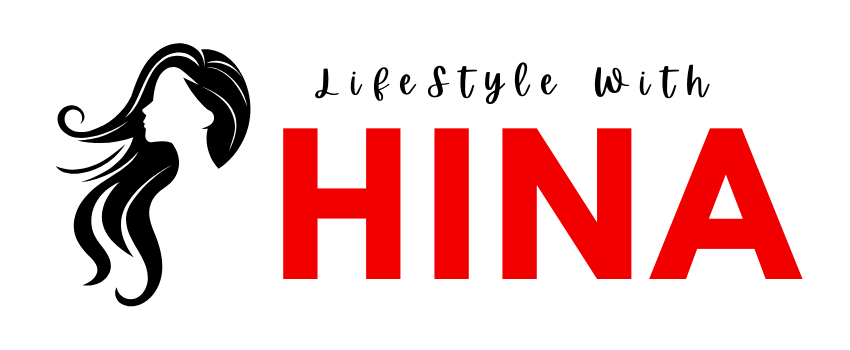Creating an Effective Workplace Safety and Health Program Should Be: Core Elements for Success

Creating an Effective Workplace Safety and Health Program Should Be: Core Elements for Success

Safety and Health Program Should Be
Every organization, regardless of size or industry, has an ethical and legal obligation to protect its workforce from on-the-job hazards that could lead to illness, injury, or worse. Investing in occupational health and safety pays dividends through sustained productivity, legal compliance, reduced insurance costs, and an enhanced reputation to know what Safety and Health Program Should Be.
But what exactly constitutes an “effective” safety and health program should be? This comprehensive guide examines the fundamental components required to design, implement, and sustain a program that safeguards employees while furthering overarching business objectives. Follow along chronologically or navigate to specific sections of interest.
Foundational Considerations for Safety and Health Programs
Approaching worker safety requires a multilayered strategy and long-term commitment from organizational leadership. Key foundational considerations include:
- Committing to a “Safety First” Culture: Leadership must foster an enterprise-wide culture that treats safety as the utmost priority behind all business outcomes. This facilitates openness in reporting issues.
- Understanding Moral Imperatives: Legal compliance aside, providing a safe workspace is a moral obligation leaders have towards staff who dedicate their effort and talents towards organizational success.
- Ensuring C-Suite Ownership: The CEO along with senior leaders in operations, risk management, HR, and legal must visibly own and champion ongoing health and safety strategy.
- Establishing a Dedicated Budget: Adequately funding both personnel and programmatic resources is imperative rather than treating investments as an afterthought. This includes covering expenses for professional training, safety capital improvements, regular auditing activities, etc.
With the right mindset and resource dedication, the next step entails building core infrastructure to administer the program.
Structural Components of Effective Safety and Health Programs
At minimum, organizations need four fundamental areas of focus—leadership and administration, hazard identification, incident investigation, and worker training:
- Leadership & Administration: This oversees the centralized structure governing all standard-setting, compliance monitoring, and continuous improvement efforts. Responsibilities also include crafting safety policies, ensuring adequate staffing/budget, bolstering risk management protocols, maintaining detailed records/documentation, and more. Appointing a dedicated senior-level Safety Manager helps coordinate. Establishing a safety committee with representation across departments also provides helpful cross-functional collaboration opportunities in decision-making.
- Hazard Identification & Control: Identifying workplace hazards comprises the heart of mitigating risks. Common assessment methodologies include self-audits, external audits from insurers, injury/incident trend analysis, anonymous safety surveys completed by staff, regular safety walkthroughs, and input from safety committees or frontline workers. Some high-risk sectors like construction also require extensive job hazard analyses before commencing work. Once vulnerabilities get identified, procedures detailing how to control risks go into policies and training content.
- Incident Response & Investigation: Despite the best efforts, workplace accidents or health exposures still occur. Having response protocols prepares teams to handle any fallouts through prompt emergency assistance, investigation procedures kicking off within 24 hours, structured root cause analyses, and enacting preventative actions like policy or equipment changes to avoid repeats. Require staff immediately report health or safety incidents without fear of reprisals so occurrences get captured accurately.
- Training: Educating staff across the organizational hierarchy represents the first line of defense for prevention. Tailor training programs to roles and risks employees encounter. Focus on health and safety orientation for new hires plus ongoing skills refreshers for current personnel. Also confirm workers know protocols for emergency response, incident reporting, hazard identification, proper equipment use, correct processes execution, workplace violence responses, and other priorities – with sign-off on comprehension.
Those elements alone already foster a vastly safer environment than no structured approach at all. But optimizing towards advanced frameworks brings huge advantages covered next.
Advancing to Integrated Safety and Health Management Systems
Mature safety programs evolve into Integrated Safety and Health Management Systems (ISHMS) which embed worker wellbeing protections into overarching quality and operational excellence strategies.
Hallmarks of ISHMS adoption include:
- Holistic Governance: Safety gets represented in C-Suite discussions, long-term plans, and policy rollouts on par with priorities like sustainability, risk management, production efficiencies, or quality assurance.
- Automated Tracking: Centralized data capture tools and analytics provide dynamic visibility into lead and lag indicators like workplace injury trends, corrective actions closure rates, real-time compliance task status, overdue inspections, safety training completions, and more to drive evidence-based improvements.
- Risk-Based Resource Allocation: Rather than spreading thin resources uniformly or reactively responding post-incident, algorithms quantify dollar losses associated with threats in each operational area and allocate proportional safety investments there based on potential downstream expenses. This optimizes impact.
- Integrated Communications: Beyond static policy documents, leverage multiple communications channels like manager discussions, employee input channels, alerts triggered from analytic models suggesting preventative actions for emerging high-risk situations, and more to exchange invaluable insights.
- Proactive Prevention: Look beyond past internal incidents and required compliance. The future focus entails continuously identifying even unlikely risks through tools like Failure Mode and Effects Analysis (FMEA) before they catalyze crises and protecting ahead of the curve.
Though ISHMS capabilities require longer-term vision, data infrastructure, and financial commitment, this integration with existing business processes sustains maximal worker protection over time.
Ensuring a Positive Return on Workplace Safety Investments
Of course, dedicating major resources towards safety goals rightfully warrants monitoring effectiveness and validating program ROI:
- Benchmark Against Standards: Compare program structure, training rigor, and leading indicators like participation rates or hazard correction timelines against proprietary/industry benchmarks or certification criteria via ANSI/ASSP Z10, ISO 45001, OHSAS 18001 and other credible frameworks.
- Leverage Insurance Assessments: Insurers have vested interests in mitigating risks among covered clients. Take advantage of discounted premiums for robust safety programs. Audit findings also identify areas for tightening.
- Regularly Review Metrics: Key lagging measures like injury rates, severity, lost days, workers’ compensation claims, etc measured periodically (ideally quarterly) indicate where targeted safety solutions effectively bend incident trends downwards.
- Calculate Direct Savings: The flip side entails tallying expenses avoided through averted medical care, legal expenditures, or property damage plus indirect savings from maintaining workflow continuity versus operational disruption after serious incidents.
- Assess Productivity Protection: Healthy, safe, focused workers simply drive stronger bottom-line results and customer satisfaction through quality execution versus unmitigated risks siphoning productivity from the organization.
Taken together, those perspectives confirm workplace safety and risk control programs significantly bolster financial outcomes over the long-term even if hard to decipher individually and know what Safety and Health Program Should Be. Viewing worker health as an investment in sustained business success rather than a pure cost center is central to maximizing mutual returns for both staff and employers alike.
Additional Workplace Health and Safety Program Best Practices
Supplementing foundational safety infrastructure and management systems integration with supplemental good governance practices enhances results:
- Incentivize Safety Excellence: Recognize individuals or teams proactively identifying hazards or championing innovative solutions through acknowledgments, spotlight features in newsletters, gift cards, designation of safety representatives, and positive impacts on performance management.
- Leverage External Partnerships: stay on the cutting edge by partnering with risk management associations, academic institutions, non-profits, standard bodies, and insurers to implement safety program best practices.
- Promote Mental Health: Psychosocial factors like workplace stress, anxiety, depression or fatigue dangeruously impact judgment, focus, and team dynamics. Prioritize early identification and supportive resources.
- Emphasize Ergonomics: Ensure equipment, tooling, workstations and procedures mitigate risks of repetitive strain or cumulative injuries over long horizons.
- Confirm Pandemic Readiness: Lessons from COVID-19 require keeping infectious disease response plans updated covering aspects like sanitization, ventilation, isolation protocols, health self-screening procedures, contingent staffing pipelines, remote work flexibility, and more.
Small Businesses Handbook
Leaders of companies with fewer than 100 workers lacking deep safety expertise or bandwidth can still create basic plans preventing common accidents through a focus on:
- Maintaining Workers Compensation Insurance: Secures critical incident cost buffers and prompts safety advisories from carriers.
- Conducting Thoughtful Hiring: Rigorously screen new hires to confirm proper licensing, experience safety hazards in role.
- Prioritizing Machine Guarding/Maintenance: Shielding moving parts on equipment or tools protects against needless entanglement, lacerations, crushing injuries or amputations.
- Providing Personal Protective Equipment (PPE): Furnish suitable hardhats, respirators, hearing protection, safety vests, gear against chemical splashes, adequate foot protection and detailed guidelines for area-specific demonstration of proper use.
- Designating First Aid /CPR Rescue Personnel: Ensure capacity to assist after common slips, transportation incidents or situations like severe allergen exposures, low oxygen or shock. At least 10% coverage with training appropriate for higher risk sectors.
- Promoting a Speak-Up Culture: Tell staff their personal health is the #1 priority regardless of production goals. Empower them to flag issues without criticism. Listen and respond to build trust.
The BottomLine
At the end of the day, avoiding harm within the workplace requires year-round vigilance, courageous leadership and proactive systems preventing complacency as threats evolve.
Adopt both foundational program infrastructure like risk oversight committees and advanced capabilities like predictive risk modelling. But also embrace less tangible cultural hallmarks manifesting through team accountability, respect for individual worker health outcomes, and an intrinsic rejection of unnecessary risks whatever the pace of operations.
While the financial, productivity and trust payoffs from safety excellence speak for themselves in time, leaders must anchor ongoing security efforts in moral conviction to know Safety and Health Program Should Be. Fulfilling this responsibility proves central for the sustainability of organizational purpose overall.
Frequently Asked Questions
Q: What qualifications should my organization seek when looking to hire a Workplace Safety Manager?
A: Opt for candidates holding certifications like a Certified Safety Professional (CSP) or Construction Health and Safety Technician (CHST). Also confirm expertise areas like risk assessment methodologies, safety analytics, ergonomics, industrial hygiene, regulatory protocols, training techniques and prior team oversight experience spanning all aspects of workplace safety programs.
Q: Should we design our safety policies and procedures in-house or hire a vendor?
A: Leveraging external vendors with existing policy templates, online training materials, subject matter expertise and best practices honed across many clients jumpstarts progress tremendously versus fully manual processes. But balance incorporating some customized protocols addressing your workforce’s unique needs and operating environments not covered by one-size-fits all off-the-shelf solutions.
Q: How often should employees undergo safety training?
A: Frontline employees should undergo health and safety training during onboarding, whenever new policies or equipment get introduced, and through annual refresher courses at minimum. Leadership and risk management teams may require more frequent technical knowledge updates to inform program oversight. Tailor frequency and depth to risk profiles associated with individual roles.
Q: Can workplace health and safety programs help manage aggressive or violent behavior from customers?
A: Yes. Well-rounded programs tackle psychosocial risks like verbal harassment, discrimination, bullying or physical violence from both internal and external sources. anonymous reporting procedures allow documenting concerning trends. Deescalation training, conflict avoidance protocols, manual alarms, security support, or heightened supervision represent potential countermeasures under a violence protection approach.




